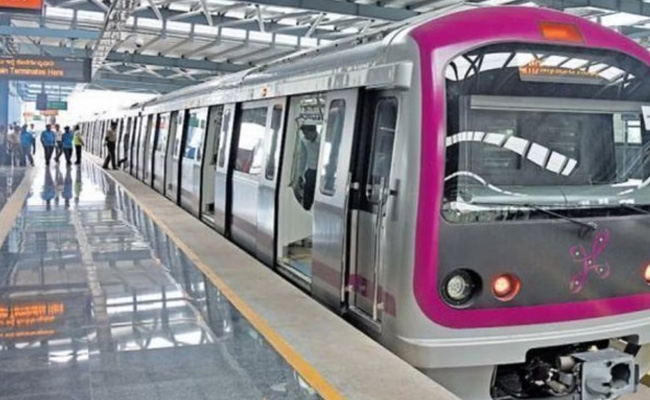
World

The Union Cabinet chaired by Prime Minister Narendra Modi on Friday approved the Rs 15,611 crore Bangalore Metro Rail Project Phase-3 with two elevated corridors for a length of 44.65 km with 31 stations.
The two elevated corridors include Corridor-1 from JP Nagar to Kempapura (along Outer Ring Road West) for a length of 32.15 km with 22 stations, and Corridor-2 from Hosahalli to Kadabagere (along Magadi Road) for a length of 12.50 km with nine stations.
Bengaluru will have 220.20 km of active Metro Rail network once the Phase-3 project is operationalised. The project will provide an efficient alternative to road transport and alleviate traffic congestion. It will be particularly impactful on the heavily congested routes on Outer Ring Road West, Magadi Road, and other major arterial roads of the city.
Phase-3 will add approximately 44.65 km of new Metro lines, connecting the western part of the city that was previously underserved.
Phase-3 will also integrate key areas of the city which include Peenya Industrial Area, IT industries on Bannerghatta Road and Outer Ring Road, textile and engineering items manufacturing units on Tumkuru Road and ORR, Bharat Electronics Limited (BEL), and major educational institutions like PES University, Ambedkar College, Polytechnic College, KLE College, Dayanandsagar University, ITI etc.
The Phase-3 corridors will also provide connectivity to the southern part of the city, Outer Ring Road West, Magadi Road and various neighbourhoods, enhancing the overall connectivity in Bengaluru.
Improved last mile connectivity to commercial centres, industrial hubs, educational institutions, and healthcare facilities will facilitate better access for residents.
Apart from reduction in road traffic, which will lead to smoother movement of vehicles, and reduction in travel time, the project also has huge environment benefits as it can significantly reduce carbon emissions compared to traditional fossil fuel-based transport, an official statement said.
The construction and operationalisation of Phase-3 will also generate jobs in various sectors, from construction workers to administrative staff and maintenance personnel.
Also, the enhanced connectivity can stimulate local businesses, especially in areas near the new Metro stations which can also attract investment and lead to the development of the previously less accessible regions, the statement added.
Advertisment